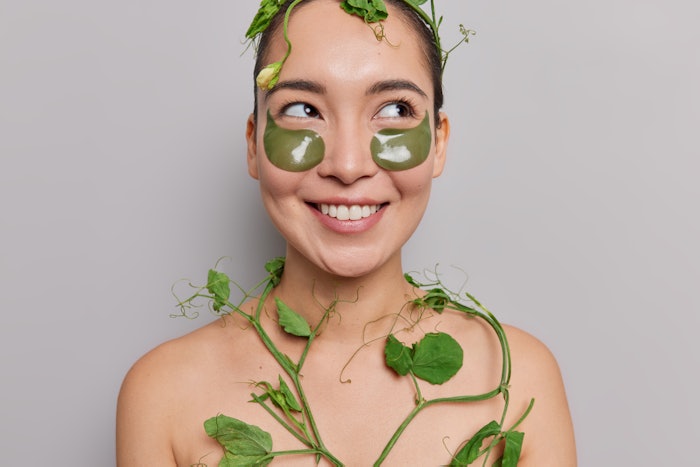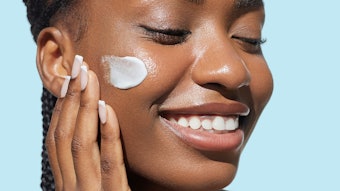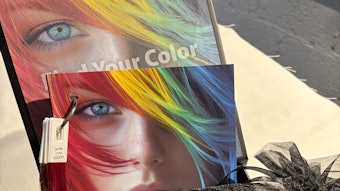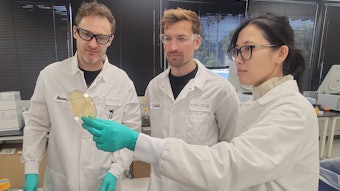
Responsible beauty is not just a niche interest but has gained mainstream momentum. Turning to industry experts, Cosmetics & Toiletries reached out for their views on current trends in sustainable, responsible beauty, along with future directions. Following are insights from: Bob Jacobs, Hydrosome Labs; Anja Herrmann, Ph.D., Lipoid Kosmetik AG; Joseph Shieh, Nouryon; and Ophélie Bourgon, Roquette Beauté.
For some time now, sustainability has been at the forefront of cosmetics and personal care innovation – driven by consumer demand, regulations and foresighted companies genuinely embracing this tenet. “The quest for sustainable practices and natural ingredients for cosmetics is more urgent than ever,” noted the Chemical Abstracts Service (AS) Science Team.1 “[This is] driven by the growing awareness of the environmental, social and economic impacts of product life cycles.”
Recently, a shift within sustainability became apparent during the New York Society of Cosmetic Chemists (NYSCC) Suppliers’ Day: biodegradability and lifecycle analysis emerged more frequently during discussions. While not new, these concepts outpaced sustainability and upcycled, which have led the dialogue in recent years. And more often than not, companies noted how sustainability has become a “given” or expectation with consumers and customers.
Sustainability put another way is responsible beauty. Both are holistic approaches that consider environmental impact, ethical sourcing, transparency and health. They’re about not only what's in a bottle, but how the product and bottle were made, as well as what happens to the product and bottle after they are used.
Within the broader responsible beauty segment, bio-based materials from natural and renewable sources – typically plants, animals or microorganisms – are projected to grow to U.S. $8 billion by 2031 (5.9% CAGR from 2023-2031), Transparency Market Research Reports.2 Persistence Market Research highlights that globally, the biodegradable microbeads market is set to nearly double from $4.8 billion in 2023 to $9.1 billion by 2030 (9.5% CAGR).3
Fortune Business Insights also estimates the global upcycled cosmetic ingredients market will climb from $254.66 million in 2024 to $400.12 million by 2032 (5.81% CAGR, 2024-2032).4 These examples demonstrate that responsible beauty is not just a niche interest but has gained mainstream momentum.
Turning to industry experts, Cosmetics & Toiletries reached out for their views on current trends in responsible beauty, along with future directions. Following are their insights.
Clean, Effective and Holistic
“The beauty industry is rapidly embracing responsible beauty trends centered on clean, transparent formulations with safe, recognizable ingredients and a minimal environmental footprint,” writes Bob Jacobs, president of Hydrosome Labs. “Consumers today [also] demand products that align with their own wellness values and sustainability, favoring multifunctional solutions that deliver effective results while reducing packaging and waste,” he adds.
Per Jacobs, this shift is driven by increasing ingredient transparency, the rising consumer awareness of environmental impacts, and the desire for simpler yet effective formulations. “These trends are likely to advance through technologies that optimize the delivery of active ingredients while holistically supporting skin health,” he explains, adding, for example, that there’s growing interest in products that maintain microbiome balance and provide bioavailable nutrition topically.
What’s more, Jacobs believes consumers will seek formulations that balance transparency, efficacy and sensorial appeal, fueling innovation in clean and sustainable beauty products that offer real and visible benefits. Enabling these directions, he points to Hydrosome Labs’ patented ultrafine bubble technology, Hydrosome H2O, that reportedly enables brands to remove filler ingredients and maximize the actives already in their formulations. “This technology creates ultrafine bubbles (‘Hydrosomes’) that enhance the delivery, absorption and stability of active ingredients without the need for additional stabilizers or complex emulsifiers.”
According to Jacobs, independent studies have shown the improved skin delivery and performance of niacinamide, bakuchiol, 3-O-ethyl ascorbic acid, carnosine and zinc PCA when formulated with Hydrosome H2O. “These improvements allow brands to reduce the concentration of actives without sacrificing efficacy, to cut unnecessary filler ingredients, and to simplify INCI declarations, resulting in cleaner, more sustainable skin care products,” he notes. “Hydrosome H2O also improves hydration and nutrient uptake, aligning with consumer demand for visible results, ingredient transparency and minimal environmental impact.”
Value Driven, High Performance and Eco Efficacy
Anja Herrmann, Ph.D., senior marketing manager for Lipoid Kosmetik AG, believes responsible beauty is gaining strong momentum as consumers become more informed and value driven. “Transparency, ethical sourcing and sustainability are no longer optional — they are expected,” she writes. “Beauty is seen as a form of self-expression, leading to rising demand for inclusive, personalized and ethically made products.”
She emphasizes consumers seek responsible solutions that align with both their personal values and environmental concerns. “Social media accelerates this shift by enabling communities to share insights and demand accountability from brands,” she adds.
According to Herrmann, the future of responsible beauty lies in circularity, eco-innovation and traceability. “There's growing potential in upcycled ingredients, biotechnology and localized supply chains that empower farming communities and reduce environmental footprints,” she explains.
“As eco-efficacy becomes standard, the opportunity for differentiation lies in merging high performance with proven sustainability,” she notes. “Personalization through tech, combined with responsible ingredient sourcing, will redefine how consumers choose products.”
Supporting this market direction are innovations like MorinGuard (INCI: Glycerin (and) Water (Aqua) (and) Moringa Oleifera Seed Extract), which reportedly exemplifies next-generation responsible beauty. “Sourced from upcycled moringa seed cake, it offers clinically proven protection for irritated skin while supporting a traceable and ethical supply chain in Rwanda,” she writes.
“The ingredient responds to demands for eco-efficient solutions by combining efficacy, transparency and social impact. [The] repurposing of raw materials reduces environmental impact, making it a model for future cosmetic actives that align with the values of empowered, responsible beauty consumers.”
Circular, Renewable and Lower Impact
Joseph Shieh, global strategic marketing manager of personal care for Nouryon, sees responsible beauty as focused on sustainability, transparency, inclusivity and ethical practices. “…The trend emphasizes safe, non-toxic ingredients. Inclusivity drives brands to offer diverse product lines for various skin tones and hair types. And ethical practices prioritize cruelty-free and vegan products. These trends are driven by consumer awareness, next-gen value shifts and digital influence,” he explains.
According to Shieh, there’s great potential for developing innovative materials and practices that meet consumer and regulatory demands and foster industry-wide sustainability. “Future responsible beauty trends will emphasize circularity with renewable sources that further support manufacturers' sustainability goals,” he emphasizes.
“Transparency will increase through traceable supply chains while sustainable feedstocks like bio-based materials will further reduce environmental impacts,” he continues. “Stronger collaboration between manufacturers and ingredient suppliers will improve manufacturers’ ability to offer more inclusive product offerings, enabling the creation of more versatile ingredients for diverse products.”
What’s more, Shieh believes ethical sourcing and certifications will help manufacturers adapt to and address new regulatory standards. “Importantly, technological integration, including AI, will boost efficiency, sustainability and customer interaction.”
Per Shieh, technologies like Demeon ReNu100 propellant (INCI: Dimethyl Ether), Structure Silk starch (INCI: Hydroxypropyl Starch Phosphate) and Armocare Aqua 12 surfactant (INCI: Brassicamidopropyl Dimethylamine (pending)) will continue to enable sustainable beauty.
“Demeon ReNu100 offers a high renewable carbon index for aerosol products. Structure Silk provides natural, biodegradable rheology modification and texturizing. Armocare Aqua 12, a non-quat surfactant, enhances hair softness and adheres to green chemistry principles for low environmental impacts,” he explains, adding that BeautyCreation, Nouryon's AI tool, aids access to natural formulation databases.
Biodegradable, Sustainable Packaging and Smaller Footprint
“The responsible beauty market is undergoing a significant evolution,” observes Ophélie Bourgon, marketing manager for Roquette Beauté. “At the forefront of this evolution is sustainability, as consumers increasingly prioritize brands that actively minimize their environmental footprint,” she writes.
According to Bourgon, consumers see brands as having a greater impact than individual actions and as such, expect them to lead by example. In response, brands are focused on sustainable ingredient sourcing, eco-friendly packaging and responsible production methods to preserve ecosystems.
In addition, per Bourgon, consumers seek products that minimally impact the planet via biodegradability and sustainable packaging. “Ultimately, these trends are driven by consumers preferences, regulatory pressures and societal shifts toward ethical and business practices,” she explains. “The challenge now lies in how brands can differentiate themselves within the competitive responsible beauty market landscape.
In terms of future directions, Bourgon points to sustainability evolving from a novel concept into a standard expectation. “Initially, responsible practices were seen as innovative but now they are a fundamental part of business operations,” she notes. “This shift has created challenges for brands striving to differentiate themselves, as consumers increasingly expect environmental and ethical considerations to be integrated into products as a baseline.”
Moving forward, to Bourgon, the potential for differentiation lies in combining sustainability with sensorial innovation; and Beauté by Roquette ST 305 (INCI: Amylopectin) reportedly represents a meaningful advancement in this area.
“This 100% plant-based ingredient from waxy-corn starch addresses key environmental and safety concerns,” she explains. “It offers soft powdery texture similar to PMMA; brings a mattifying effect; … delivers a talc-like soft after feel; … and is compatible with a high percentage of oil, [supporting] … rich and creamy nourishing formulations.”
References
- CAS Science Team. (2024, May 24). Evolving beauty: The rise of sustainable and natural ingredients for cosmetics. American Chemical Society. Available at https://www.cas.org/resources/cas-insights/the-rise-of-natural-ingredients-for-cosmetics
- Transparency Market Research (Accessed 2025, Jun 10). Bio-based cosmetic market (source: plants, animals, microbes and others; and product type: emollients, conditioning polymers, surfactants, emulsifiers, rheology controllers, antimicrobials and others) - Global industry analysis, size, share, growth, trends and forecast, 2023-2031. Available at https://www.transparencymarketresearch.com/bio-based-cosmetics-market.html
- Persistence market research. (2024, Jan) Biodegradable microbeads market. Available at https://www.persistencemarketresearch.com/market-research/biodegradable-microbeads-market.asp
- Fortune Business Insights. (2025, May 26). Upcycled cosmetic ingredients market size, share and industry analysis, by application (skin care, hair care, color cosmetics and others) and regional forecast, 2024-2032. Available at https://www.fortunebusinessinsights.com/upcycled-cosmetic-ingredients-market-110448













